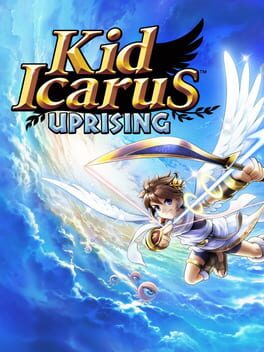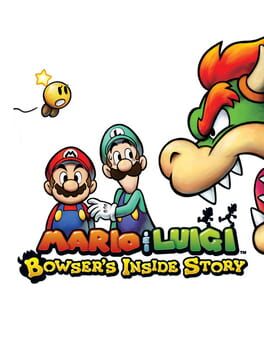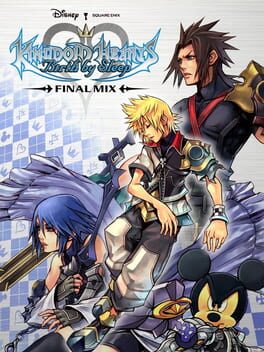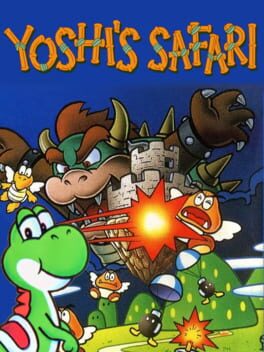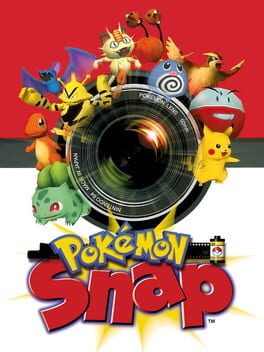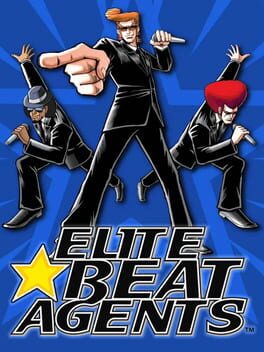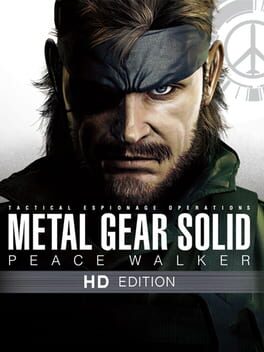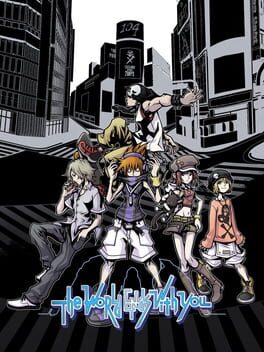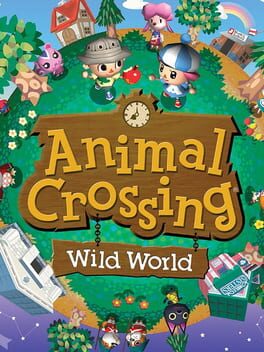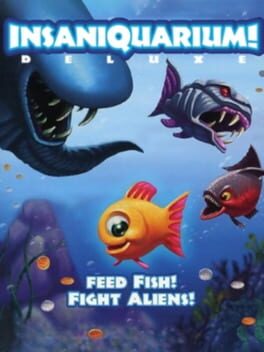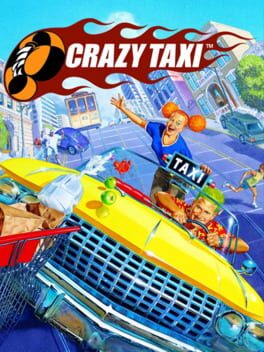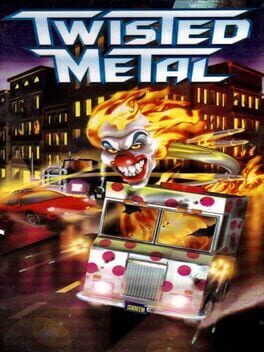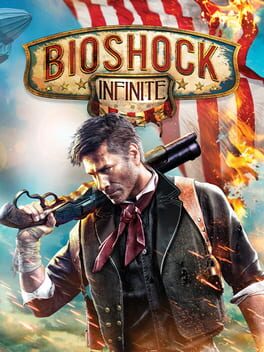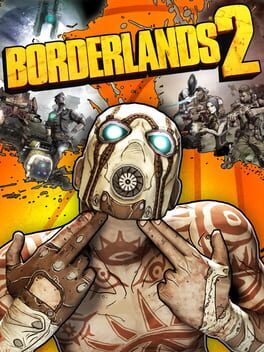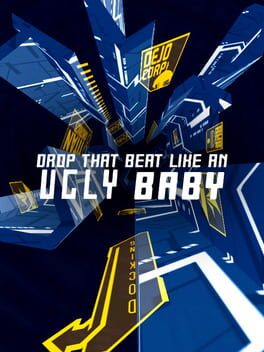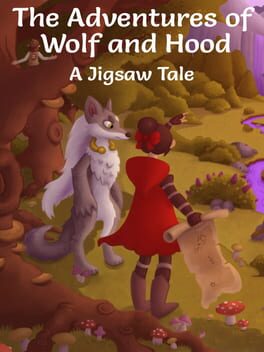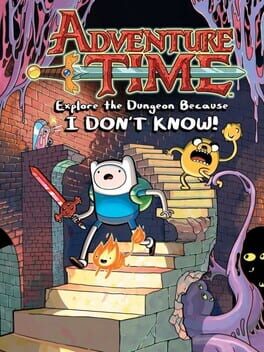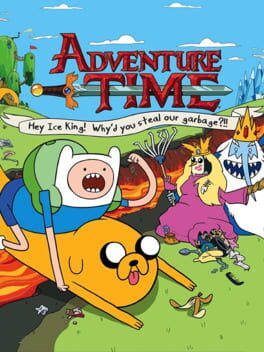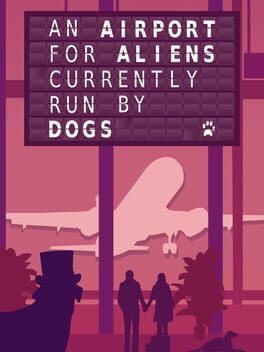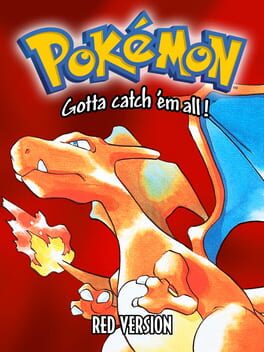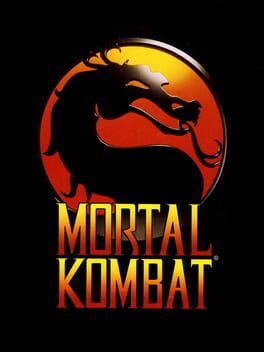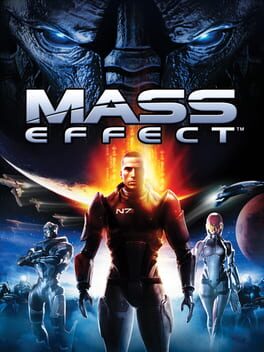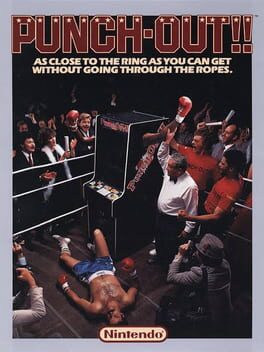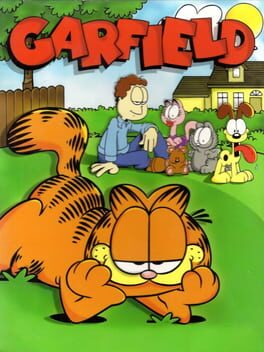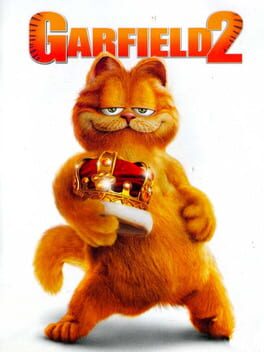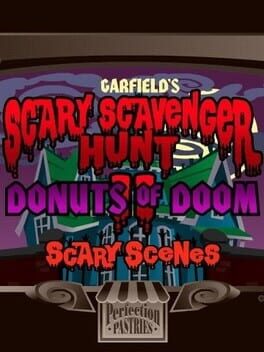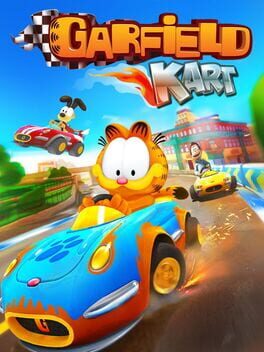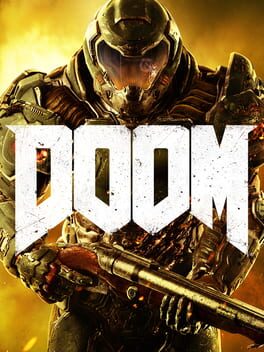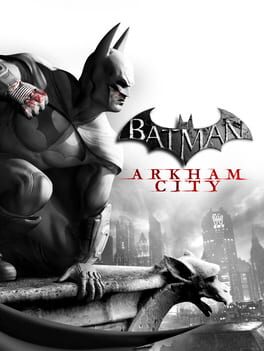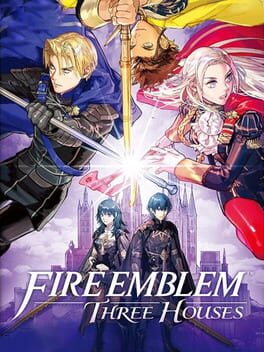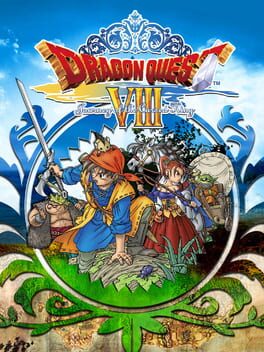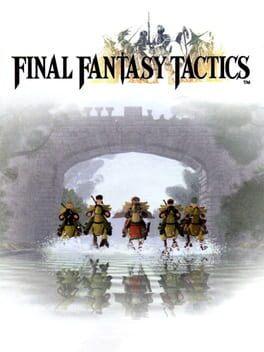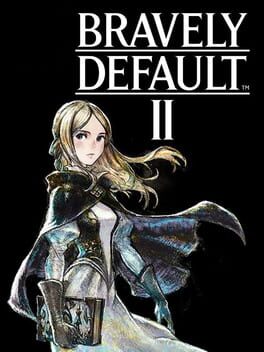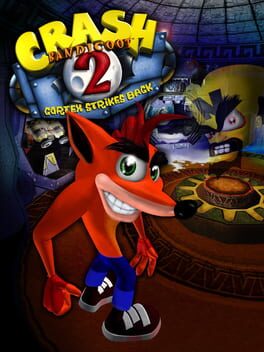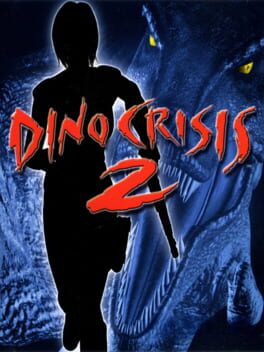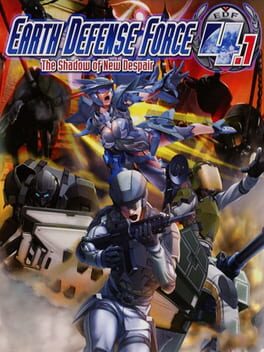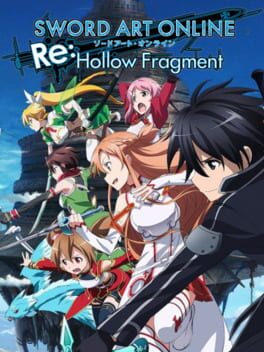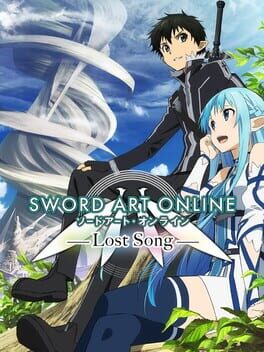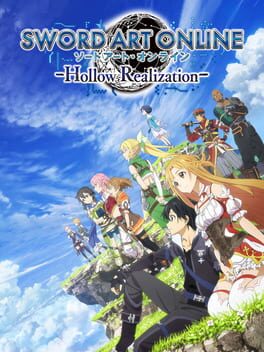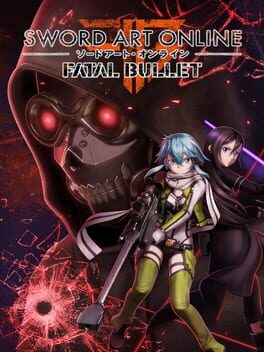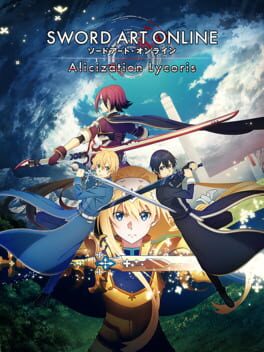willn46
2609 reviews liked by willn46
Kid Icarus: Uprising
2012
I played this game on my 3DS in public and a Blood member thought I was throwing Crip signs at him; but I was just trying to juggle pressing buttons in a full 3D movement section with a flat d-pad -- while pinching my freshly dislocated thumb and index finger to hold the 3DS stylus. Blud just killed me in the middle of the street, picked up my 3DS while looting my corpse and became blind because I had the 3D toggled on and he looked into the screen at a slightly wrong angle.
The Legend of Zelda
1986
A few years back, a storm knocked down some powerlines in my area, and my apartment was left without power for four days. This happened to be toward the tail end of a long falling-out I was experiencing with my friend groups, so I found myself alone for four days with nothing to do (except go to work; annoyingly, my office still had power, despite being at best a mile down the road). Poking around my apartment, I found an old copy of the NES Game Atlas my mother found at a thrift store years ago, leafed through it, and was inspired to play the original Legend of Zelda - a game I'd tried and failed to get through numerous times over the years. I had a decent amount of battery in my Switch, so I spent a couple days in a powerless apartment playing Zelda, bringing my Switch into work so I could recharge its battery, reading my Atlas with waterpowered flashlights as I tried to navigate Hyrule and put an end to Ganon's reign of terror.
This, I think, is probably the type of experience you have to have to get the intended effect of Zelda 1 these days (well, maybe not the "losing your friends" part). Zelda 1 is a game about discovery, born from Shigeru Miyamoto's childhood nostalgia of exploring the countryside. There's an aimless, directionless design to it; the player is naturally guided along to things like getting the Sword right away and entering the Eagle dungeon right away, but there's no reason they have to. It's a really cool and unique design that the Legend of Zelda series didn't really revisit until Breath of the Wild, but it does mean that unless you have some sort of external aid guiding you along, like a map or friends, you're likely to just flail about aimlessly until you lose steam. At the same time, for me personally, it's such a fine line between "I'm getting help to direct my playthrough" and "I'm experiencing a game vicariously because I followed a step-by-step guide" that I tend to struggle with - so having an official guide to cross-reference, not rely upon, made for the happy medium I needed.
One thing I don't see discussed a lot is the original game's title theme. Like, yes, it's largely an arrangement of the overworld theme, thrown together at the last minute in place of Koji Kondo's original plan, a cover of the not-actually-in-the-public-domain "Boléro". But I've always been entranced by its slow cadence, playing over that shot of a bubbling waterfall, then over the text crawl as the main theme slowly kicks in. It's sort of a majestic first impression the game gives (as much as anything describing 'PRINCE DARKNESS "GANNON"' can be called majestic, anyway), and while I've read testimonials from 80s kids crediting the golden Game Pak and boxart for conveying this, I definitely think the title and opening crawl contribute to this, too.
In some ways, Zelda 1 feels like Gen 1 of Pokémon. The game is extremely janky; everyone knows it's extremely janky; a huge part of the game's reception is around what a moonshot miracle the game represents for its era, in spite or even because of this jank. Like, there's so much to the game that a person just knows and takes for granted through pop culture osmosis, like bombing and burning stuff or shoving blocks around. If you're at all familiar with the original Japanese release, it's interesting just how much stuff is left vestigial in the localization, like how you fight Pols Voices (screaming into the Famicom's second controller's microphone) or certain pivotal late-game hints being completely exorcised. And it's fun to rib it for how weird the translations are - "DODONGO DISLIKES SMOKE", "DIGDOGGER HATES CERTAIN KIND OF SOUND", "ONES WHO DOES NOT HAVE TRIFORCE CAN'T GO IN", etc - but so much of that is also considered to be part of the experience, a sort-of gamer's Shibboleth. It's a rite of passage to be told that EASTMOST PENNINSULA IS THE SECRET, a hint that you likely will not act upon because it's so isoteric (it's referring to the top-right screen in the overworld - there's an invisible passage at the top).
Actually, I appreciate that Zelda 1 is in on its own joke. When so much of the game is bombing and burning random stuff, it's really funny that the game takes the time to riff on it. Everyone knows IT'S A SECRET TO EVERYBODY, ironically, but PAY ME FOR THE DOOR REPAIR CHARGE is also really funny the first time you run into it. I'm also fond of I'D BET YOU'D LIKE TO HAVE MORE BOMBS, delivered immediately after you spent a bomb to open the way into the guy's room. I tend to fall into the trap of seeing things I wasn't around to experience fresh as being these great monolithic statements, where Popular Thing X was this great Thing that came unto and forever changed the face of the world, when in reality it was just a thing that a couple of guys went through a creative process and made. People think about the things they make, and they often try to have fun with it. It's important to remember that, too, and actually experiencing self-aware jokes a creator makes within the same body of work helps with that humanization process.
Zelda 1 doesn't have a ton of music, something you really become aware of when you look at surrounding material (there's a reason the Super Show always reaches for covers of the Overworld/Underworld themes). But I do appreciate that Death Mountain is given its own theme. It's harsh, droning, and oppressive - perfectly in cadence with the massive final dungeon, the sanctum of Ganon's power, and a place friggin' called "Death Mountain". Clearly, I think the music the game does have is well-used; mostly I appreciate that there are legs to it beyond the Overworld theme being (rightfully) iconic.
I did collect all power-ups and hearts during this playthrough. But I did not play the Second Quest, so I'm not marking this as Mastered. Still on the hook for a second playthrough, some ol' day.
This, I think, is probably the type of experience you have to have to get the intended effect of Zelda 1 these days (well, maybe not the "losing your friends" part). Zelda 1 is a game about discovery, born from Shigeru Miyamoto's childhood nostalgia of exploring the countryside. There's an aimless, directionless design to it; the player is naturally guided along to things like getting the Sword right away and entering the Eagle dungeon right away, but there's no reason they have to. It's a really cool and unique design that the Legend of Zelda series didn't really revisit until Breath of the Wild, but it does mean that unless you have some sort of external aid guiding you along, like a map or friends, you're likely to just flail about aimlessly until you lose steam. At the same time, for me personally, it's such a fine line between "I'm getting help to direct my playthrough" and "I'm experiencing a game vicariously because I followed a step-by-step guide" that I tend to struggle with - so having an official guide to cross-reference, not rely upon, made for the happy medium I needed.
One thing I don't see discussed a lot is the original game's title theme. Like, yes, it's largely an arrangement of the overworld theme, thrown together at the last minute in place of Koji Kondo's original plan, a cover of the not-actually-in-the-public-domain "Boléro". But I've always been entranced by its slow cadence, playing over that shot of a bubbling waterfall, then over the text crawl as the main theme slowly kicks in. It's sort of a majestic first impression the game gives (as much as anything describing 'PRINCE DARKNESS "GANNON"' can be called majestic, anyway), and while I've read testimonials from 80s kids crediting the golden Game Pak and boxart for conveying this, I definitely think the title and opening crawl contribute to this, too.
In some ways, Zelda 1 feels like Gen 1 of Pokémon. The game is extremely janky; everyone knows it's extremely janky; a huge part of the game's reception is around what a moonshot miracle the game represents for its era, in spite or even because of this jank. Like, there's so much to the game that a person just knows and takes for granted through pop culture osmosis, like bombing and burning stuff or shoving blocks around. If you're at all familiar with the original Japanese release, it's interesting just how much stuff is left vestigial in the localization, like how you fight Pols Voices (screaming into the Famicom's second controller's microphone) or certain pivotal late-game hints being completely exorcised. And it's fun to rib it for how weird the translations are - "DODONGO DISLIKES SMOKE", "DIGDOGGER HATES CERTAIN KIND OF SOUND", "ONES WHO DOES NOT HAVE TRIFORCE CAN'T GO IN", etc - but so much of that is also considered to be part of the experience, a sort-of gamer's Shibboleth. It's a rite of passage to be told that EASTMOST PENNINSULA IS THE SECRET, a hint that you likely will not act upon because it's so isoteric (it's referring to the top-right screen in the overworld - there's an invisible passage at the top).
Actually, I appreciate that Zelda 1 is in on its own joke. When so much of the game is bombing and burning random stuff, it's really funny that the game takes the time to riff on it. Everyone knows IT'S A SECRET TO EVERYBODY, ironically, but PAY ME FOR THE DOOR REPAIR CHARGE is also really funny the first time you run into it. I'm also fond of I'D BET YOU'D LIKE TO HAVE MORE BOMBS, delivered immediately after you spent a bomb to open the way into the guy's room. I tend to fall into the trap of seeing things I wasn't around to experience fresh as being these great monolithic statements, where Popular Thing X was this great Thing that came unto and forever changed the face of the world, when in reality it was just a thing that a couple of guys went through a creative process and made. People think about the things they make, and they often try to have fun with it. It's important to remember that, too, and actually experiencing self-aware jokes a creator makes within the same body of work helps with that humanization process.
Zelda 1 doesn't have a ton of music, something you really become aware of when you look at surrounding material (there's a reason the Super Show always reaches for covers of the Overworld/Underworld themes). But I do appreciate that Death Mountain is given its own theme. It's harsh, droning, and oppressive - perfectly in cadence with the massive final dungeon, the sanctum of Ganon's power, and a place friggin' called "Death Mountain". Clearly, I think the music the game does have is well-used; mostly I appreciate that there are legs to it beyond the Overworld theme being (rightfully) iconic.
I did collect all power-ups and hearts during this playthrough. But I did not play the Second Quest, so I'm not marking this as Mastered. Still on the hook for a second playthrough, some ol' day.
Yoshi's Safari
1993
Yoshi's Safari
1993
Yoshi's Safari
1993
Yoshi's Safari
1993
When it came to Nintendo’s earlier consoles, there were many different weird, yet sometime completely pointless peripherals that were made to “enhance” the gaming experiences. Some of these terrible peripherals include the Power Glove, a motion-based glove that barely worked whatsoever, the Power Pad, an exercise mat that also barely worked at all, R.O.B. the Robot, a robotic buddy that would help you out when playing certain Nintendo games (and by that, I mean only two games), and the Speedboard, which is literally just a piece of plastic that is supposed to “put the speed at your fingertips”, when in reality, you would just throw it in the trash. One of their best peripherals though, even if they can’t be used properly nowadays, would be with the NES Zapper and the Super Scope, which were both gun-based controllers you would use to play games like Duck Hunt and Battle Clash, and they worked pretty well for the most part. Alongside these gun-based peripherals would also be gun-based games that took full advantage of them, such as with today’s game, Yoshi’s Safari.
Ever since I had heard about this game, I had been interested in trying it out for the longest time for several reasons. One, it was a game where Mario wielded a GUN, which is something you don’t see every day, and two, because it did look like a genuinely fun game, even if it was all based around this light-gun gimmick. But like with everything else I was interested in, I put it off for a long time, until I ultimately decided to check it out, and yeah, it is a pretty good game. It wasn’t exactly amazing, and what you see is what you get, with no other extra bells or whistles, but it is definitely the best Super Scope game that I have ever played… which is mostly because it is the ONLY Super Scope game that I have ever played, but eh, semantics.
The story is one that is mostly what you would expect from a Yoshi/Mario game, where Bowser and his Koopalings DON’T kidnap Peach, but instead two other royal figures named King Fret and Prince Pine, steal the 12 gems, and take over Jewelry Land, and it is up to Mario and Yoshi to go shoot them all in the face to save the day, which is an incredibly silly and basic premise, and I love it, the graphics are pretty good, looking pretty similar to other Mario titles on the system, but is still very appealing to look at and experience, especially with some of the sprites of enemies, the music is… alright, being what you would expect out of a Mario/Yoshi soundtrack, but none of the tracks really stood out as being great or all that memorable, the control is extremely simple, especially if you are playing single-player, and you should get used to it very quickly (at least, if you are playing it on an emulator like I did, because I am not buying a bunch of stuff in order to play just one game), and the gameplay is also simple and straightforward, but it still provides for a decent amount of fun, despite how brief it is.
The game is a first-person shooter, where you take control of Mario while on the back of Yoshi, go through a set of twelve different levels all across Jewelry Land, shoot the fuck out of everything and anything that moves in front of you using the gun that Mario just has for some reason, gather plenty of coins, items, and powerups along the way to not only give you a helping hand, but to also help increase certain stats to make the journey easier, and take on plenty of bosses, with most of them being typical for a Mario game, except now they all have giant mechs for some reason, which is absolutely hilarious and weird as hell. It is extremely basic for an FPS, but for what it is, it can still be very fun to play, and it does make great use of the Super Scope.
The game primarily has you using the Super Scope to take out enemies, where in single player mode, Yoshi will automatically move forward, and all you need to worry about is just mowing down all the enemies in front of you. There is a two-player mode, where one of you controls Mario and just keeps shooting enemies, while the other person controls Yoshi, and is responsible for moving through the stage, which is most likely the best way to play through the game. I myself just stuck to the single-player mode, because I have no friends, and I still had a great time regardless, but I would definitely imagine that you and a friend could have a more enjoyable time with what we have here. And speaking of which, one of the biggest qualities that this game has going for it is the fact that it exists at all, at least for me. Seriously, it is a Mario FPS, which has never been done before and since, and while it is all as family-friendly as you would expect, the fact that it just has Mario carrying around this bazooka with nobody questioning it is hilarious. Although, I will have to dock some points for the fact that Mario does try to shoot at Yoshi at the end of every level. It is clear that his violent tendencies from Donkey Kong Jr. are still around, and I will not tolerate any harm to the good dino!
In terms of actual problems that the game has, one of the biggest that it has is that it is too short and too easy. While there are quite a few stages to tackle, you can beat all of them pretty easily in around an hour, which isn’t all that bad considering when it came out, but what also doesn’t help is how overpowered you are. The game gives you more then enough ammo to take on anything that comes your way, which recharges really quickly, and on top of that, all of the powerups that you can get will make it so that it is impossible to lose. I didn’t die once throughout my entire playthrough, and yeah, maybe if I were actually using the real hardware, it could potentially be harder, but I highly doubt that. But hey, to the game’s credit, it does give you a code for a Hard Mode once you beat it, and there are multiple pathways you can take in levels, so if you are looking for a more difficult and somewhat varied experience with a second playthrough, there ya go.
Overall, despite its short length and easy-as-hell difficulty, I still ended up having a lot of fun with Yoshi’s Safari, with it definitely being the best Nintendo light-gun game I have ever played, and I do wanna eventually give it a shot on the harder difficulty to see how much it could ramp up after what I had experienced. I would definitely recommend it for those who are Mario fans, as well as those who are fans of the Super Scope, because it is definitely the best game to make use of this peripheral out of all of them. Now, if you excuse me, I need to go hunt down Mario myself. Again, I will not tolerate any harm being brought to Yoshi, and that plumber has gone too far.
Game #436
Ever since I had heard about this game, I had been interested in trying it out for the longest time for several reasons. One, it was a game where Mario wielded a GUN, which is something you don’t see every day, and two, because it did look like a genuinely fun game, even if it was all based around this light-gun gimmick. But like with everything else I was interested in, I put it off for a long time, until I ultimately decided to check it out, and yeah, it is a pretty good game. It wasn’t exactly amazing, and what you see is what you get, with no other extra bells or whistles, but it is definitely the best Super Scope game that I have ever played… which is mostly because it is the ONLY Super Scope game that I have ever played, but eh, semantics.
The story is one that is mostly what you would expect from a Yoshi/Mario game, where Bowser and his Koopalings DON’T kidnap Peach, but instead two other royal figures named King Fret and Prince Pine, steal the 12 gems, and take over Jewelry Land, and it is up to Mario and Yoshi to go shoot them all in the face to save the day, which is an incredibly silly and basic premise, and I love it, the graphics are pretty good, looking pretty similar to other Mario titles on the system, but is still very appealing to look at and experience, especially with some of the sprites of enemies, the music is… alright, being what you would expect out of a Mario/Yoshi soundtrack, but none of the tracks really stood out as being great or all that memorable, the control is extremely simple, especially if you are playing single-player, and you should get used to it very quickly (at least, if you are playing it on an emulator like I did, because I am not buying a bunch of stuff in order to play just one game), and the gameplay is also simple and straightforward, but it still provides for a decent amount of fun, despite how brief it is.
The game is a first-person shooter, where you take control of Mario while on the back of Yoshi, go through a set of twelve different levels all across Jewelry Land, shoot the fuck out of everything and anything that moves in front of you using the gun that Mario just has for some reason, gather plenty of coins, items, and powerups along the way to not only give you a helping hand, but to also help increase certain stats to make the journey easier, and take on plenty of bosses, with most of them being typical for a Mario game, except now they all have giant mechs for some reason, which is absolutely hilarious and weird as hell. It is extremely basic for an FPS, but for what it is, it can still be very fun to play, and it does make great use of the Super Scope.
The game primarily has you using the Super Scope to take out enemies, where in single player mode, Yoshi will automatically move forward, and all you need to worry about is just mowing down all the enemies in front of you. There is a two-player mode, where one of you controls Mario and just keeps shooting enemies, while the other person controls Yoshi, and is responsible for moving through the stage, which is most likely the best way to play through the game. I myself just stuck to the single-player mode, because I have no friends, and I still had a great time regardless, but I would definitely imagine that you and a friend could have a more enjoyable time with what we have here. And speaking of which, one of the biggest qualities that this game has going for it is the fact that it exists at all, at least for me. Seriously, it is a Mario FPS, which has never been done before and since, and while it is all as family-friendly as you would expect, the fact that it just has Mario carrying around this bazooka with nobody questioning it is hilarious. Although, I will have to dock some points for the fact that Mario does try to shoot at Yoshi at the end of every level. It is clear that his violent tendencies from Donkey Kong Jr. are still around, and I will not tolerate any harm to the good dino!
In terms of actual problems that the game has, one of the biggest that it has is that it is too short and too easy. While there are quite a few stages to tackle, you can beat all of them pretty easily in around an hour, which isn’t all that bad considering when it came out, but what also doesn’t help is how overpowered you are. The game gives you more then enough ammo to take on anything that comes your way, which recharges really quickly, and on top of that, all of the powerups that you can get will make it so that it is impossible to lose. I didn’t die once throughout my entire playthrough, and yeah, maybe if I were actually using the real hardware, it could potentially be harder, but I highly doubt that. But hey, to the game’s credit, it does give you a code for a Hard Mode once you beat it, and there are multiple pathways you can take in levels, so if you are looking for a more difficult and somewhat varied experience with a second playthrough, there ya go.
Overall, despite its short length and easy-as-hell difficulty, I still ended up having a lot of fun with Yoshi’s Safari, with it definitely being the best Nintendo light-gun game I have ever played, and I do wanna eventually give it a shot on the harder difficulty to see how much it could ramp up after what I had experienced. I would definitely recommend it for those who are Mario fans, as well as those who are fans of the Super Scope, because it is definitely the best game to make use of this peripheral out of all of them. Now, if you excuse me, I need to go hunt down Mario myself. Again, I will not tolerate any harm being brought to Yoshi, and that plumber has gone too far.
Game #436
Pokémon Snap
1999
Another game I've played a couple times but replayed so I could talk about it on Backloggd. There's a bunch of stuff I wouldn't mind revisiting like this, but I'll try not to run through a bunch of 'em all at once. Variety is the spice of life, and all that. Anyway, I'd sorta been meaning to revisit the original, especially after playing through New Pokémon Snap a couple years back.
As I've mentioned before, I was there for Pokémania since the day the anime started its regular broadcast, but I had limited access to the video games themselves. Pokémon Snap is actually one of the few games I played when it was new, thanks to those wonderful Blockbuster kiosks. I think most people reading this will be familiar with them, but just in case: video rental chain Blockbuster Video had a special promotional deal with Nintendo, where they created modified demo versions of Pokémon Snap (and later Pokémon Stadium) to play in arcade-like cabinets. It's been so long that I don't remember entirely how the kiosks were different, apart from the fact that for a couple bucks, you could print out stickers of the photos you took (something I was never able to do). I also seem to remember that you could only play the Beach course, but I don't know if that's a false memory, or if that was just the game at my particular store, or what's up with that. I don't think these demo versions had that much functionality limited?
While not the first Pokémon spin-off produced - heck, it's reusing the models and animations created for the Japanese Pokémon Stadium - Pokémon Snap is the first spin-off released stateside (excluding Smash Bros.). You can't really credit Snap for Pokémania - the one-two-three punch of the anime, the games, and the Trading Card Game are more responsible. But Snap very much embodied Pokémania for me. Conventional wisdom suggests that a photo safari sort of game is not the most enticing hook for general audiences (which is probably why the original "Jack and the Beanstalk" concept never took off). But a Pokémon photo safari? The chance to see these fantasy creatures everyone's talking about just doing their own thing in a world? Now there's your hook!
Pokémon Snap is a short, simple game, actually very much in line with the arcade mentality the demo kiosks would suggest. This isn't to say there isn't any depth; to the contrary, each course is filled with plenty of secret interactions that the player has to puzzle out. I like that a decent amount of Pokémon are tied to puzzles that rely upon the player's curiosity or familiarity with series lore, as is the case with Magneton, Slowbro, Ditto, and Gyarados. I also always forget that the player can't see Haunter, but the camera renders it in full - such a cool way of integrating a ghost into this adventure. But by and large, the game's content to let the player play with a portion of the original 151 Pokémon for a little bit over the course of seven short stages before calling it a day. There's not a ton to do besides go for high scores, but for the scope the game sets out for itself, it's a great little time.
With Blockbuster long gone, most of those old kiosks have ended up in private collections. But at some point in my teenage years, deep into the Wii era, the hospital in my hometown got their hands on one, too. For years, whenever my family had to bring my sister or brother or myself in for a check-up, I'd see it in the pediatric waiting room, there for anyone to play. I've always hoped that whatever the kids waiting there were dealing with, maybe a fun little adventure with Pokémon Snap would help ease things a little bit.
As I've mentioned before, I was there for Pokémania since the day the anime started its regular broadcast, but I had limited access to the video games themselves. Pokémon Snap is actually one of the few games I played when it was new, thanks to those wonderful Blockbuster kiosks. I think most people reading this will be familiar with them, but just in case: video rental chain Blockbuster Video had a special promotional deal with Nintendo, where they created modified demo versions of Pokémon Snap (and later Pokémon Stadium) to play in arcade-like cabinets. It's been so long that I don't remember entirely how the kiosks were different, apart from the fact that for a couple bucks, you could print out stickers of the photos you took (something I was never able to do). I also seem to remember that you could only play the Beach course, but I don't know if that's a false memory, or if that was just the game at my particular store, or what's up with that. I don't think these demo versions had that much functionality limited?
While not the first Pokémon spin-off produced - heck, it's reusing the models and animations created for the Japanese Pokémon Stadium - Pokémon Snap is the first spin-off released stateside (excluding Smash Bros.). You can't really credit Snap for Pokémania - the one-two-three punch of the anime, the games, and the Trading Card Game are more responsible. But Snap very much embodied Pokémania for me. Conventional wisdom suggests that a photo safari sort of game is not the most enticing hook for general audiences (which is probably why the original "Jack and the Beanstalk" concept never took off). But a Pokémon photo safari? The chance to see these fantasy creatures everyone's talking about just doing their own thing in a world? Now there's your hook!
Pokémon Snap is a short, simple game, actually very much in line with the arcade mentality the demo kiosks would suggest. This isn't to say there isn't any depth; to the contrary, each course is filled with plenty of secret interactions that the player has to puzzle out. I like that a decent amount of Pokémon are tied to puzzles that rely upon the player's curiosity or familiarity with series lore, as is the case with Magneton, Slowbro, Ditto, and Gyarados. I also always forget that the player can't see Haunter, but the camera renders it in full - such a cool way of integrating a ghost into this adventure. But by and large, the game's content to let the player play with a portion of the original 151 Pokémon for a little bit over the course of seven short stages before calling it a day. There's not a ton to do besides go for high scores, but for the scope the game sets out for itself, it's a great little time.
With Blockbuster long gone, most of those old kiosks have ended up in private collections. But at some point in my teenage years, deep into the Wii era, the hospital in my hometown got their hands on one, too. For years, whenever my family had to bring my sister or brother or myself in for a check-up, I'd see it in the pediatric waiting room, there for anyone to play. I've always hoped that whatever the kids waiting there were dealing with, maybe a fun little adventure with Pokémon Snap would help ease things a little bit.
Xenoblade Chronicles 2: Hope Found Where You Go
Xenoblade Chronicles 2 is a game that I had low expectations for. I absolutely loved Xenoblade Chronicles 1 and kept my expectations low for Xenoblade Chronicles 2 because I went into it thinking I'd enjoy it, but not hold to that same level I do with Xenoblade Chronicles 1. But Xenoblade Chronicles 2, much like how the first game did to me, blew my expectations again. Xenoblade Chronicles 2 is a fantastic JRPG, with a great cast, a great world to explore, and an amazing expanded universe that was one of my favorite things about Xenoblade 1. The gameplay is an improvement from Xenoblade 1, and the story is right on par with Xenoblade Chronicles 1 as well in my opinion. This isn't my first experience with Xenoblade Chronicles 2. I actually got it at launch around December back when I was 12 years old. I remember not liking it because I never learned the combat, and because I was a dumb 12-year-old, I gave away my physical version of the game and replayed Super Mario Odyssey again for the hundredth time.
Technically speaking, this is one of the best-looking Nintendo Switch games, even now for a game that came out near the end of 2017. Even in handheld mode, it still looks and runs great, each location is unique to its style. It's a great showcase from Monolift Soft to not only show off the power of the Nintendo Switch but also the skillset the team over at Monolift Soft has when it comes to game development. The OST complements the game and each location it plays incredibly well. Whether it's the calming music that plays when you explore Alrest, or the heavy guitar bangers that play during combat, each song fits Xenoblade Chronicles 2 perfectly, and some could even be a part of the Xenoblade Chronicles 1 OST. The gameplay system in Xenoblade Chronicles 2 follows the same basic formula from Xenoblade Chronicles 1, but with some extra improvements that make it way more enjoyable.
Xenoblade Chronicles 2 introduces Blades, Blades come from Core Crystals, and depending on the rarity of the Core Crystal, you could either get a basic blade or a quite useful blade to use. I found using Core Crystals and trying to get new blades not as bad as I thought. At first, it sounded like it would be pretty grindy to get any good Core Crystals and to get a good blade in the first place, but grinding for Core Crystals isn't that bad, and I had pretty good luck with getting some great blades, I got Dahlia and Godfrey pretty effortlessly without trying. Arts make a return from Xenoblade 1 but with the introduction of Blades. there are new special moves called Blade Specials, which when used create a Blade Combo that does a great amount of damage to the enemy. There are also Driver Combo's, which do a great amount of damage too when the whole party inflicts the enemy with the four status conditions (Break, Topple, Launch, and Smash) onto an enemy. If you perform a Driver Combo and a Blade combo at the same time, it creates a Fusion Combo, which gives even more damage. I absolutely love using the Driver Combo and Blade Combo, it's rewarding to inflict Topple onto an enemy and use a Blade Combo, and it was easier for me to understand and get used to the combat system in Xenoblade Chronicles 2 than it was in Xenoblade Chronicles 1. It's mostly likely due to my past experience with Xenoblade 1, but that still makes Xenoblade 2 shine in that regard.
But one thing that doesn't shine in Xenoblade 2 is the tutorials, they suck, and they don't do a good job explaining the basics well enough. The Affinity Chart is used to upgrade skills for Drivers and Blade in Xenoblade 2, pretty much being this game's equivalent of a skill tree. The Affinity Chart for Drivers like Rex and Nia for example is more in line with a basic skill tree, being able to use Skill Points to unlock new skills, while for Blades you unlock new skills for them by completing achievements, kinda like trying to get a PlayStation trophy. While cool on the surface, it is incredibly annoying when you are blocked from making progress in the main story because you don't have a blade that has [insert blade skill here] to go forward. So to make up for it, you have to take a break from the main story to complete whatever skill you need to move forward. I don't mind the Affinity Chart, but I dislike how it can be a roadblock towards making progress into the main story. I would've liked it if the skills needed to progress were naturally given by doing the main story, or something like that. It was annoying at first, but nothing too major to complain about, more so a minor inconvenience in an otherwise, stellar game.
Side quests in Xenoblade 2 fall more in line with typical side quests in other JRPGs than it does with Xenoblade 1, with Xenoblade 1, you could've done side quests and have it a good way to level up your party at the same time. That was one of my favorite parts of Xenoblade 1 because it gave more of an incentive to complete side quests, but I also wished that in Xenoblade 1 typical exp farming by killing enemies. Looks like in Xenoblade 2 I got what I wanted with typical exp farming by killing enemies, but lost out on the incentive of side quests. I somewhat understand why, I may have given away too much exp and made certain moments in the game too easy, but I just wished both were balanced well enough to have both. Despite that, I still liked the side quests in Xenoblade 2, not as engaging as the ones in Xenoblade 1, but still good to do here-and-there.
The story of Xenoblade Chronicles 2 was the main factor for me being engaged with this game and what it had to tell. From beginning to end, Xenoblade 2 tells a tale about hope, finding hope in the world, and the finale act is just the icing on the cake when it comes to wrapping everything together. I love the cast of this game. Rex, Pyra/Mytrha, Nia, Jin, and Malos were some of the characters that stood out to me. I've seen some people make fun of Rex, and I can see where you may not see him seriously sometimes from an outside perspective, but over the course of the game, you see how much an amazing character he is. Rex proves why he is the main character, he is hope, and he isn't the Driver of the Aegis for nothing. He is the embodiment of what Xenoblade Chronicles 2 wants to tell you about hope. Rex is always a shining, charming person who brings hope to everybody he meets, even to the characters who are supposed to be the enemies.
While I still prefer Shulk over Rex as my favorite Xenoblade protagonist based on personal preference (haven't played Xenoblade 3 yet so I can't comment about Noah). Rex is still an amazing character, and he's only just the main character. Most of the people who talk about Pyra/Mythra are either people who haven't played Xenoblade 2, people who know them from Smash Bros, or down bad gooners who only see them as anime waifus. Pyra and Mythra are characters that humanize being a weapon. They're a part of the Aegis's power, and how a lot of guilt from their past, but over the course of the game, there is hope, there is hope to foster their strengths for the better. Other characters are like this too, Tora is a Nopon who can't be a driver, but with hope, he is able to create Poppi and have an artificial blade. Nia, Zeke, and Morag have this too, and even for Jin and Malos, it's all over the place.
Going into Xenoblade Chronicles 2, I knew about the "fanservice" that was in it, and from what I saw online, people made it out to make this game look like it was so awful with the fanservice. Dudes were making it sound like it was the High School DxD of video games and after finishing the game, the complaints about the fanservice were completely blown out of the water. There is a little bit of fanservice sometimes in the main story, but I think that was only 3 or 4 times throughout the main story, and I was fine with that. I don't mind fanservice if it doesn't interfere with the main story in any major way, and that's why I didn't mind Xenoblade 2's fanservice. There's probably more fanservice in some side quests, but I haven't played too many of the side quests to answer that. I was playing with the English Dub for all of my playthrough, but for some reason, it's pretty awkward when it comes to the voice acting. I believe the voice actors did a good job for what they had to do with what they were given, but sometimes the lip-sync between the character's lips and voice acting don't match in some cutscenes. When I first played Xenoblade 1, I was thrown off by the characters in that game having British accents, but now in Xenoblade 2, I'm thrown off by some characters not having a British accent, like Pyra for example. The journey that Xenoblade Chronicles 2 tells, exploring Alrest to find the World Tree, truly feels like a journey, and getting to that point is so rewarding.
While Xenoblade Chronicles 2 is a sequel to Xenoblade Chronicles 1, they do not connect whatsoever with their story. However, I recommend you play Xenoblade 1 before Xenoblade 2 if you haven't already. The combat is much easier in Xenoblade 1 to get used to, and is an amazing game too. Coming over to Xenoblade 2 after Xenoblade 1 will help a lot, especially in certain parts of the final act of the story, which you can ignore if you haven't played Xenoblade 1, but for me who already played Xenoblade 1, I looked at those story moments like that one Leonardo DiCaprio meme of him pointing.
Overall, I loved Xenoblade Chronicles 2. It's an incredible game, and JRPG, that me and many people have slept on for too long. There is so much slander to this game thanks to content creators like videogamedunkey and others. It's a game people need to go into without the outside voices and form their own feelings and thoughts throughout their playthrough. I loved the cast, the world, the gameplay, everything. Xenoblade Chronicles 2 is a special game, I look forward to getting to the Torna DLC, and eventually Xenoblade Chronicles 3!
Stats:
The 21st Game I've Completed in 2024.
Played on Nintendo Switch
Hours into Game: 60
Last Statement: Cause look at dunkey, he made a video about Xenoblade Chronicles 2, I like some of the dunkey videos, but what the fuck does he know about Xenoblade?
Xenoblade Chronicles 2 is a game that I had low expectations for. I absolutely loved Xenoblade Chronicles 1 and kept my expectations low for Xenoblade Chronicles 2 because I went into it thinking I'd enjoy it, but not hold to that same level I do with Xenoblade Chronicles 1. But Xenoblade Chronicles 2, much like how the first game did to me, blew my expectations again. Xenoblade Chronicles 2 is a fantastic JRPG, with a great cast, a great world to explore, and an amazing expanded universe that was one of my favorite things about Xenoblade 1. The gameplay is an improvement from Xenoblade 1, and the story is right on par with Xenoblade Chronicles 1 as well in my opinion. This isn't my first experience with Xenoblade Chronicles 2. I actually got it at launch around December back when I was 12 years old. I remember not liking it because I never learned the combat, and because I was a dumb 12-year-old, I gave away my physical version of the game and replayed Super Mario Odyssey again for the hundredth time.
Technically speaking, this is one of the best-looking Nintendo Switch games, even now for a game that came out near the end of 2017. Even in handheld mode, it still looks and runs great, each location is unique to its style. It's a great showcase from Monolift Soft to not only show off the power of the Nintendo Switch but also the skillset the team over at Monolift Soft has when it comes to game development. The OST complements the game and each location it plays incredibly well. Whether it's the calming music that plays when you explore Alrest, or the heavy guitar bangers that play during combat, each song fits Xenoblade Chronicles 2 perfectly, and some could even be a part of the Xenoblade Chronicles 1 OST. The gameplay system in Xenoblade Chronicles 2 follows the same basic formula from Xenoblade Chronicles 1, but with some extra improvements that make it way more enjoyable.
Xenoblade Chronicles 2 introduces Blades, Blades come from Core Crystals, and depending on the rarity of the Core Crystal, you could either get a basic blade or a quite useful blade to use. I found using Core Crystals and trying to get new blades not as bad as I thought. At first, it sounded like it would be pretty grindy to get any good Core Crystals and to get a good blade in the first place, but grinding for Core Crystals isn't that bad, and I had pretty good luck with getting some great blades, I got Dahlia and Godfrey pretty effortlessly without trying. Arts make a return from Xenoblade 1 but with the introduction of Blades. there are new special moves called Blade Specials, which when used create a Blade Combo that does a great amount of damage to the enemy. There are also Driver Combo's, which do a great amount of damage too when the whole party inflicts the enemy with the four status conditions (Break, Topple, Launch, and Smash) onto an enemy. If you perform a Driver Combo and a Blade combo at the same time, it creates a Fusion Combo, which gives even more damage. I absolutely love using the Driver Combo and Blade Combo, it's rewarding to inflict Topple onto an enemy and use a Blade Combo, and it was easier for me to understand and get used to the combat system in Xenoblade Chronicles 2 than it was in Xenoblade Chronicles 1. It's mostly likely due to my past experience with Xenoblade 1, but that still makes Xenoblade 2 shine in that regard.
But one thing that doesn't shine in Xenoblade 2 is the tutorials, they suck, and they don't do a good job explaining the basics well enough. The Affinity Chart is used to upgrade skills for Drivers and Blade in Xenoblade 2, pretty much being this game's equivalent of a skill tree. The Affinity Chart for Drivers like Rex and Nia for example is more in line with a basic skill tree, being able to use Skill Points to unlock new skills, while for Blades you unlock new skills for them by completing achievements, kinda like trying to get a PlayStation trophy. While cool on the surface, it is incredibly annoying when you are blocked from making progress in the main story because you don't have a blade that has [insert blade skill here] to go forward. So to make up for it, you have to take a break from the main story to complete whatever skill you need to move forward. I don't mind the Affinity Chart, but I dislike how it can be a roadblock towards making progress into the main story. I would've liked it if the skills needed to progress were naturally given by doing the main story, or something like that. It was annoying at first, but nothing too major to complain about, more so a minor inconvenience in an otherwise, stellar game.
Side quests in Xenoblade 2 fall more in line with typical side quests in other JRPGs than it does with Xenoblade 1, with Xenoblade 1, you could've done side quests and have it a good way to level up your party at the same time. That was one of my favorite parts of Xenoblade 1 because it gave more of an incentive to complete side quests, but I also wished that in Xenoblade 1 typical exp farming by killing enemies. Looks like in Xenoblade 2 I got what I wanted with typical exp farming by killing enemies, but lost out on the incentive of side quests. I somewhat understand why, I may have given away too much exp and made certain moments in the game too easy, but I just wished both were balanced well enough to have both. Despite that, I still liked the side quests in Xenoblade 2, not as engaging as the ones in Xenoblade 1, but still good to do here-and-there.
The story of Xenoblade Chronicles 2 was the main factor for me being engaged with this game and what it had to tell. From beginning to end, Xenoblade 2 tells a tale about hope, finding hope in the world, and the finale act is just the icing on the cake when it comes to wrapping everything together. I love the cast of this game. Rex, Pyra/Mytrha, Nia, Jin, and Malos were some of the characters that stood out to me. I've seen some people make fun of Rex, and I can see where you may not see him seriously sometimes from an outside perspective, but over the course of the game, you see how much an amazing character he is. Rex proves why he is the main character, he is hope, and he isn't the Driver of the Aegis for nothing. He is the embodiment of what Xenoblade Chronicles 2 wants to tell you about hope. Rex is always a shining, charming person who brings hope to everybody he meets, even to the characters who are supposed to be the enemies.
While I still prefer Shulk over Rex as my favorite Xenoblade protagonist based on personal preference (haven't played Xenoblade 3 yet so I can't comment about Noah). Rex is still an amazing character, and he's only just the main character. Most of the people who talk about Pyra/Mythra are either people who haven't played Xenoblade 2, people who know them from Smash Bros, or down bad gooners who only see them as anime waifus. Pyra and Mythra are characters that humanize being a weapon. They're a part of the Aegis's power, and how a lot of guilt from their past, but over the course of the game, there is hope, there is hope to foster their strengths for the better. Other characters are like this too, Tora is a Nopon who can't be a driver, but with hope, he is able to create Poppi and have an artificial blade. Nia, Zeke, and Morag have this too, and even for Jin and Malos, it's all over the place.
Going into Xenoblade Chronicles 2, I knew about the "fanservice" that was in it, and from what I saw online, people made it out to make this game look like it was so awful with the fanservice. Dudes were making it sound like it was the High School DxD of video games and after finishing the game, the complaints about the fanservice were completely blown out of the water. There is a little bit of fanservice sometimes in the main story, but I think that was only 3 or 4 times throughout the main story, and I was fine with that. I don't mind fanservice if it doesn't interfere with the main story in any major way, and that's why I didn't mind Xenoblade 2's fanservice. There's probably more fanservice in some side quests, but I haven't played too many of the side quests to answer that. I was playing with the English Dub for all of my playthrough, but for some reason, it's pretty awkward when it comes to the voice acting. I believe the voice actors did a good job for what they had to do with what they were given, but sometimes the lip-sync between the character's lips and voice acting don't match in some cutscenes. When I first played Xenoblade 1, I was thrown off by the characters in that game having British accents, but now in Xenoblade 2, I'm thrown off by some characters not having a British accent, like Pyra for example. The journey that Xenoblade Chronicles 2 tells, exploring Alrest to find the World Tree, truly feels like a journey, and getting to that point is so rewarding.
While Xenoblade Chronicles 2 is a sequel to Xenoblade Chronicles 1, they do not connect whatsoever with their story. However, I recommend you play Xenoblade 1 before Xenoblade 2 if you haven't already. The combat is much easier in Xenoblade 1 to get used to, and is an amazing game too. Coming over to Xenoblade 2 after Xenoblade 1 will help a lot, especially in certain parts of the final act of the story, which you can ignore if you haven't played Xenoblade 1, but for me who already played Xenoblade 1, I looked at those story moments like that one Leonardo DiCaprio meme of him pointing.
Overall, I loved Xenoblade Chronicles 2. It's an incredible game, and JRPG, that me and many people have slept on for too long. There is so much slander to this game thanks to content creators like videogamedunkey and others. It's a game people need to go into without the outside voices and form their own feelings and thoughts throughout their playthrough. I loved the cast, the world, the gameplay, everything. Xenoblade Chronicles 2 is a special game, I look forward to getting to the Torna DLC, and eventually Xenoblade Chronicles 3!
Stats:
The 21st Game I've Completed in 2024.
Played on Nintendo Switch
Hours into Game: 60
Last Statement: Cause look at dunkey, he made a video about Xenoblade Chronicles 2, I like some of the dunkey videos, but what the fuck does he know about Xenoblade?
60 lists liked by willn46
by dual |
5 Games
by TimAlien |
16 Games
by alenaphoenix |
15 Games
by MegaTheRealOne |
25 Games
by wheatie |
49 Games
by QuentTheSlayer |
28 Games
by stovetop |
26 Games
by MarlBocks |
8 Games
